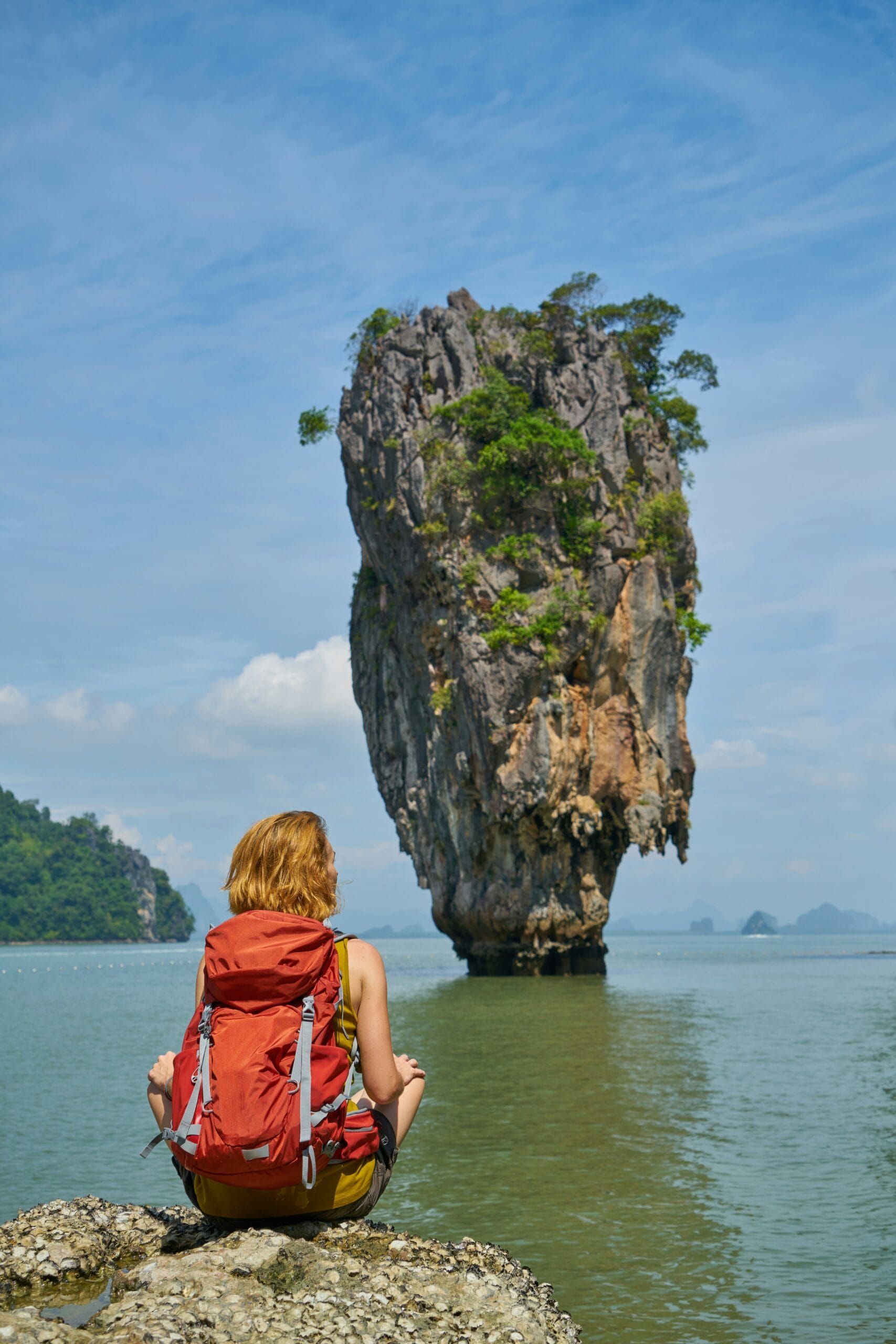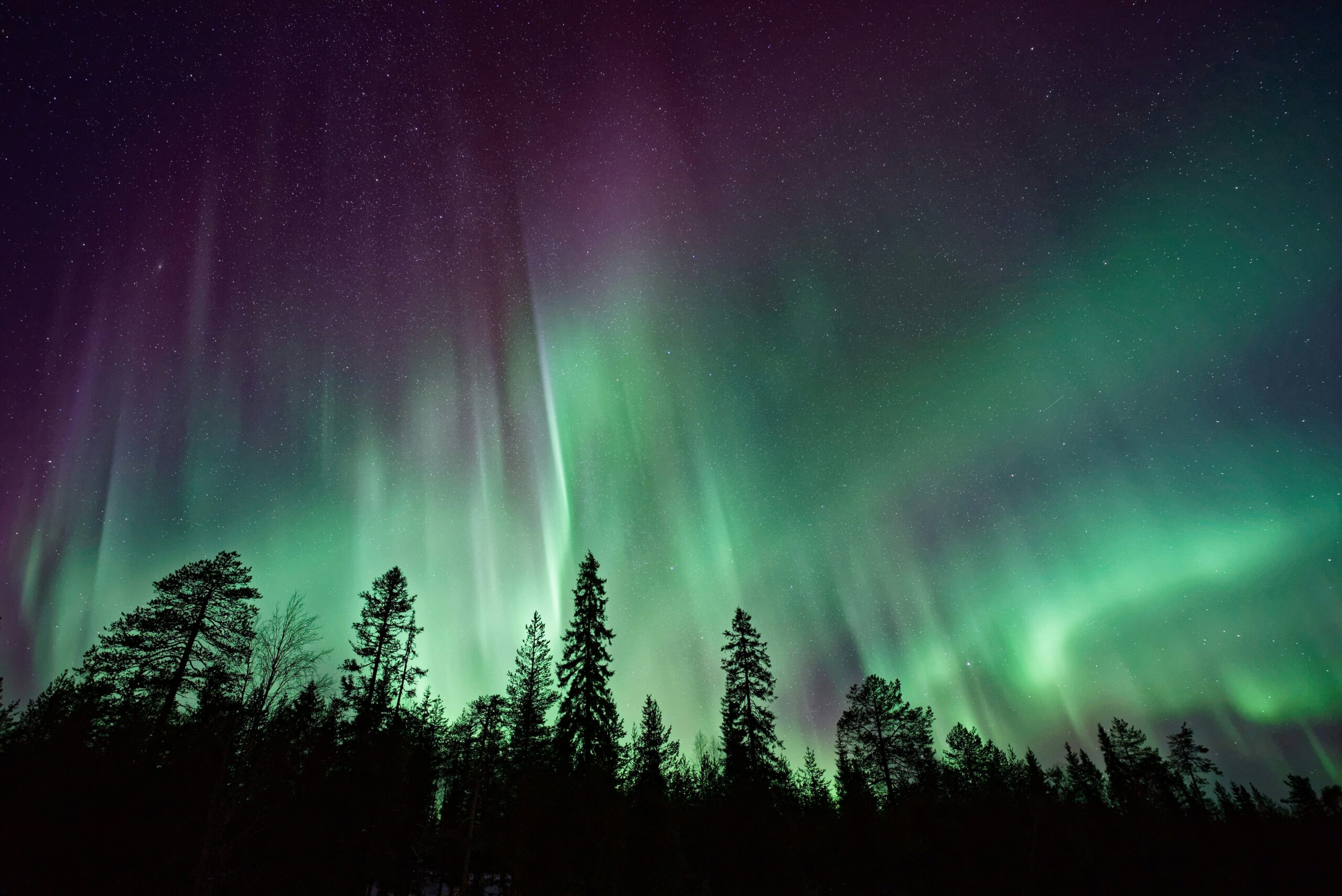Introduction to the Northern Lights Phenomenon
The Northern Lights, also known as Aurora Borealis, are a breathtaking natural spectacle that occurs primarily in polar regions. This luminous phenomenon is caused by the interaction of charged particles from the sun with atoms in the Earth’s atmosphere. When these solar particles collide with gases such as oxygen and nitrogen, they produce a stunning display of light in various colors, primarily green, pink, and purple. As a result, many people are drawn to the idea of seeing the northern lights tonight, creating a sense of excitement and anticipation among enthusiasts and travelers alike.
The science behind the Northern Lights is rooted in solar activity. During periods of increased solar wind—when the sun emits more charged particles—these particles can travel toward Earth. The planet’s magnetic field directs them towards the polar regions, leading to the mesmerizing auroras. The strength and frequency of these displays can vary, making forecasts crucial for those hoping to experience this enchanting occurrence. Using technology and scientific understanding, researchers can provide predictions about when and where the northern lights are most likely to be visible, which is vital for planning a viewing experience.
More information Understanding Delta Airlines Military Travel Benefits: Baggage Allowances and More
Understanding Delta Airlines Military Travel Benefits: Baggage Allowances and MoreWitnessing the aurora borealis is more than just an aesthetic marvel; it connects people to nature’s dynamism and the larger universe. It embodies a combination of art, science, and environmental elements that inspire awe and wonder. For many, observing the northern lights is a once-in-a-lifetime opportunity that offers a chance to appreciate the beauty of our planet. As we delve deeper into the regions of the United States that provide optimal conditions for spotting these lights, anticipation builds for those eager to witness the wonder of the northern lights tonight.
Understanding the Aurora Borealis: What Causes the Lights?
The phenomenon known as the aurora borealis, or northern lights, is a breathtaking natural display that captivates observers across the globe. It is primarily caused by the interaction of charged particles from the sun with the Earth’s magnetic field. When solar winds, which consist of these charged particles, reach our planet, they can produce stunning luminescent displays, particularly in polar regions. This interaction is not merely random; it results in particular conditions that heighten the display of the northern lights tonight.
The process begins with solar activity, such as solar flares or coronal mass ejections, which release immense quantities of energy and charged particles into space. These particles travel toward Earth, and when they encounter the Earth’s magnetic field, they are guided towards the poles. It is in the atmosphere at high latitudes where these particles collide with gases, primarily oxygen and nitrogen, resulting in the spectacular light displays we see. The colors that emerge during this interaction range from green to pink, red, blue, and violet—each color influenced by the type of gas involved and the altitude at which the interaction occurs.
More information Thanksgiving Weather Update: Preparing for the Storm
Thanksgiving Weather Update: Preparing for the StormFurthermore, geomagnetic storms play a crucial role in amplifying these auroras. When intense solar winds and magnetic activity occur simultaneously, the effects can enhance the visibility and intensity of the northern lights tonight. This means that nights following significant solar activity can often yield more vibrant and widespread displays. To observe the northern lights in their full glory, one should keep an eye on solar forecasts, which provide insights into the likelihood of auroral activity based on solar conditions. Through this understanding, observers can heighten their chances of witnessing this mesmerizing celestial phenomenon.
Forecast for Tonight’s Northern Lights: Key Areas to Watch
As excitement builds for tonight’s northern lights display, it is essential to keep abreast of the latest forecasts from NOAA outlining the prime locations for optimal viewing. With favorable geomagnetic activity expected, there are several regions across the United States where the aurora borealis could be particularly spectacular tonight.
One notable region to anticipate a vivid display is Alaska, specifically the Fairbanks area. Southern Alaska is situated under the auroral oval, making it one of the top destinations to witness the northern lights tonight. Forecasts suggest clear skies and high levels of geomagnetic storm activity, creating ideal conditions for aurora viewing.
More information Japan Breaks Annual Tourism Record: A New Milestone in Travel
Japan Breaks Annual Tourism Record: A New Milestone in TravelAnother promising area is the northern tier of the contiguous United States, including states like Montana, North Dakota, and parts of Minnesota. The latest predictions from meteorological agencies indicate that these regions might experience a significant auroral event tonight, especially in areas with minimal light pollution. Nature enthusiasts can expect vibrant colors illuminating the night sky, offering a remarkable spectacle.
Moving eastward, the Great Lakes region also stands a chance to see the northern lights due to favorable atmospheric conditions. Areas in Upper Michigan and Wisconsin are particularly conducive to northern lights viewing tonight. As local weather forecasts predict partly cloudy skies, residents in these regions should be alert for potential auroral displays.
Lastly, the New England states, particularly areas in northern Maine, may also provide a glimpse of the aurora borealis as geomagnetic activity peaks tonight. Though viewing conditions may not be as promising as in other regions, any appearance of the northern lights should not be overlooked.
More information Navigating the Busiest Holiday Travel Season in Connecticut
Navigating the Busiest Holiday Travel Season in ConnecticutWith anticipation building, it’s recommended to find a dark location away from city lights, gaze towards the northern horizon, and embrace the splendor of the northern lights tonight. Make sure to dress warmly and prepare for an unforgettable experience under the stellar sky.
Best Viewing Conditions and Times for Aurora Sightings
To maximize the chances of witnessing the stunning display of the northern lights tonight, understanding the optimal conditions and timing is essential. Primarily, the phenomenon is best observed in locations where the skies are dark. Urban light pollution significantly diminishes visibility, so seeking remote areas with minimal artificial lights enhances the experience. Furthermore, the phase of the moon also plays a critical role; a new moon phase is preferable as it provides darker skies, making the auroras more vivid.
Weather conditions are another crucial factor. Clear skies with little to no cloud cover offer the best sightlines. Checking local forecasts for cloud cover can assist in planning the best time to head out for aurora viewing. Additionally, lower humidity levels contribute to clearer visibility, making autumn and winter months particularly favorable for northern lights observations in many regions.
Timing is equally important when it comes to witnessing the aurora borealis. The northern lights are most active during the late evening hours, typically between 8 PM and 2 AM. It is within this time frame that solar activity often peaks, due to the alignment of the Earth’s rotation and solar winds. The auroras can appear suddenly and may last for minutes, hours, or even longer, thus allowing individuals ample opportunity to watch the sky.
Finally, considering seasonal variations is wise, as the auroras are more frequently visible during the winter months, particularly from late September through early April. The lengthy nights during this period increase the likelihood of spotting the northern lights tonight. By focusing on these conditions and timing factors, you’re far more likely to enjoy a spectacular display of this natural wonder.
Tips for Capturing the Northern Lights: Photography Guide
Capturing the enchanting beauty of the northern lights tonight requires careful planning and the right equipment. When preparing for your aurora photography adventure, it’s crucial to choose appropriate hardware. A DSLR or mirrorless camera that allows manual settings is ideal, as these cameras perform better in low-light conditions. Pair your camera with a sturdy tripod to minimize vibrations and ensure sharp images, especially during long exposure times.
Lens selection is also important. A wide-angle lens with a low f-stop (such as f/2.8 or lower) is recommended, as it enables more light to enter the camera and captures expansive landscapes. Additionally, using a remote shutter release or your camera’s timer can help prevent camera shake, resulting in clearer photos.
When it comes to settings, start by setting your camera to manual mode. A good starting point for exposure settings is an ISO of around 1600-3200, an aperture of f/2.8, and an exposure time of 10-30 seconds. However, these settings may need adjustments based on the intensity of the northern lights tonight and ambient lighting conditions. Always review your images and experiment with different settings for the best results.
Another essential tip is to scout your location ahead of time. Look for dark areas with minimal light pollution, as these locations enhance visibility of the aurora. Using apps and websites dedicated to aurora forecasting can help you determine the best viewing spots and timings for witnessing the spectacle.
Lastly, patience is key. The northern lights can be unpredictable, and waiting for the perfect display may take time. Ensure you dress warmly and prepare for the conditions, making your photography experience not only rewarding but also enjoyable. Perfecting your skills at capturing the northern lights will enhance your memories of this awe-inspiring phenomenon.
Impact of Geomagnetic Storms on Northern Lights Visibility
The visibility of the Northern Lights, also known as the Aurora Borealis, is significantly impacted by geomagnetic storms. These storms are disturbances in the Earth’s magnetic field caused primarily by solar activity. When the sun emits a large burst of energy in the form of solar wind, it can interact with the Earth’s magnetosphere. This interaction is what can enhance or diminish our ability to see the enchanting displays of the Aurora Borealis in the night sky.
The correlation between solar activity and geomagnetic storms is well established. During periods of high solar activity, such as solar flares or coronal mass ejections, the chances of observing the Northern Lights tonight increase dramatically. This is because these solar events send charged particles racing towards Earth. When these particles collide with atoms in the Earth’s atmosphere, they release energy in the form of light, resulting in the stunning auroral displays. Therefore, monitoring solar activity is crucial for those hoping to witness these natural phenomena.
Exploring Other Notable Locations for Aurora Viewing
The enchanting phenomenon of the northern lights captivates countless travelers and nature enthusiasts worldwide. While many people are familiar with popular spots in their native countries for experiencing the aurora borealis, numerous other remarkable locations also offer optimal viewing opportunities. Exploring these regions not only enriches one’s understanding of this natural spectacle but also ignites a sense of wanderlust. For those inclined to journey beyond their immediate vicinity, considering international destinations could present a remarkable chance to witness the northern lights tonight.
One of the most notable locations is Tromsø, Norway. Regarded as the gateway to the Arctic, Tromsø provides excellent conditions for aurora viewing due to its remote location and clear skies. The city’s vibrant culture and stunning winter landscapes enhance the experience, making it a must-visit for aurora hunters. Moreover, the Faroe Islands offer another unique perspective, where visitors can witness the northern lights on rugged cliffs surrounded by the North Atlantic Ocean’s dramatic beauty.
Moving to North America, Fairbanks, Alaska, stands out for its accessibility and climate. With a relatively high number of clear nights, Fairbanks consistently ranks among the top choices for experiencing the auroras. Travelers might also consider Yellowknife in Canada, which is known for its long aurora season and breathtakingly dark skies, perfect for spotting the celestial light display.
In conclusion, whether you are looking for a short getaway or a grand adventure, the world is filled with fascinating locales that promise captivating views of the northern lights. By exploring these regions, one can not only increase their chances of witnessing the aurora borealis but also create lasting memories in extraordinary settings. With the right planning, witnessing the magic of the northern lights tonight could just be one journey away.
Frequently Asked Questions About Northern Lights Sightings Tonight
The northern lights, also known as the Aurora Borealis, are a breathtaking natural phenomenon that many people aspire to witness. For those interested in experiencing this spectacle tonight, several questions tend to arise. Below are answers to some of the most common inquiries.
1. Can I see the northern lights tonight?
The visibility of the northern lights tonight depends largely on solar activity and local weather conditions. Many websites and apps provide real-time forecasts and visibility maps, allowing enthusiasts to plan accordingly. If conditions permit, locations in Alaska, northern Minnesota, and even parts of the northeastern United States may present great opportunities.
2. What is the best time to see the northern lights?
The optimal time to witness the northern lights typically occurs between 10 PM and 2 AM. However, it’s important to monitor local forecasts, as the lights can appear sporadically throughout the night. Staying informed about solar events can significantly enhance your chances of a successful sighting.
3. Are there safety tips to consider when viewing the northern lights?
Yes, safety is paramount when venturing out to view the northern lights tonight. Ensure you dress warmly to withstand the cold temperatures, particularly in remote areas. It’s advisable to choose well-lit locations and to travel with a companion, especially in unfamiliar terrain. Bring along necessary supplies such as water, food, and a flashlight.
4. Where are the best locations to view the northern lights?
Some of the top recommended locations include Fairbanks, Alaska, known for its clear skies, and the Lofoten Islands in Norway, though that may require travel outside the U.S. For domestic options, consider the Boundary Waters in Minnesota or areas of Michigan’s Upper Peninsula, which also provide beautiful vistas and fewer light pollution challenges.
5. Can light pollution affect visibility?
Yes, light pollution can significantly reduce your chances of seeing the northern lights. It is advisable to seek out dark areas away from city lights. National parks and remote locations are often ideal for observing the Aurora Borealis, providing clearer, more vibrant displays.
Engaging with the northern lights tonight can be an exhilarating experience. By addressing these common questions, we hope to enhance your understanding and preparation for this awe-inspiring natural event.
Conclusion: Engaging with the Natural Wonder of the Northern Lights
The Northern Lights, or Aurora Borealis, represent one of nature’s most breathtaking displays, captivating those fortunate enough to witness them. As we have explored various regions where one can view this spectacular event, it becomes apparent that experiencing the northern lights tonight creates a memorable connection with the natural world. Engaging with this phenomenon not only inspires awe but also fosters a deeper appreciation for the environment and the universe at large.
Each sighting is unique, often colored by personal experiences and the distinctiveness of the location. Whether you are standing under the sprawling skies of Alaska, the serene landscapes of the Midwest, or the enchanting mountains of the Pacific Northwest, the northern lights leave an indelible mark on the soul. The thrill of observing the celestial dance of lights fosters a communal spirit among viewers, bringing together individuals drawn by the shared pursuit of beauty and adventure.
Moreover, it is essential to share these experiences within our communities and beyond. By recounting tales of witnessing the northern lights tonight, you contribute to collective knowledge and enthusiasm surrounding this natural wonder. Whether through social media or local gatherings, your stories can inspire others to seek out these magical moments themselves. In this way, we foster a culture of appreciation for nature and encourage future generations to cherish and protect our planet’s wonders.
Ultimately, embracing the opportunity to witness the northern lights encourages a spirit of exploration and environmental stewardship. Let us all strive to engage with our beautiful world, celebrate its wonders, and inspire action for its preservation.


